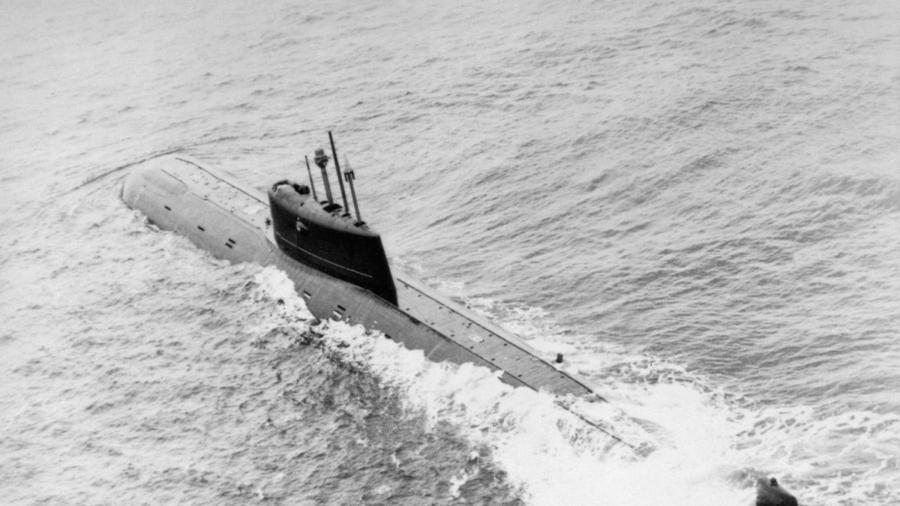Thirty years after Russian nuclear-powered submarine K-278 Komsomolets sank to the bottom of the Arctic Ocean, Norwegian scientists have found radioactive radiation measuring 100,000 higher than normal, Norwegian news outlet NRK reported.
On July 8, a team of Norwegian researchers lowered a specially designed ROV, Aegir-6000, to the sunken 400-foot long wreck that rests about a mile deep on the ocean floor, about 200 miles north of the Norway mainland. They found around 100 Becquerel (Bq) of radiation per liter, as opposed to around 0.001 Bq per liter elsewhere in the Norwegian Sea.
Russian investigators have been monitoring the ship since 1990 and have measured slightly elevated values of radioactive cesium-137 before, according to the Moscow Times, and so did several Norwegian teams, according to Business Insider, but no leaks were previously found.
But with the remote-controlled mini-sub they were able to come closer than before to the wreck and were able to obtain more accurate readings, NRK reported.
“The new surveys,” said Ingar Amundsen, head of Radiation Protection and Nuclear Safety, “are important for understanding the pollution risk posed by Komsomolets.”
The researchers took samples at three of the ships’ ventilation shafts and found abnormally high values of radiation at one of them. Moreover, researchers told the TV2 news channel that a mysterious cloud of dust could be seen on video footage emanating from the ship’s shaft, which is believed to be connected to the nuclear reactor.
The K-278 Komsomolets, which means “Member of the Young Communist League,” was launched in 1983 in Severodvinskand. It was a state of the art offensive nuclear submarine, “the world’s deepest diving submarine, and her operating depth below 3,000 feet was far below that of the best of US subs,” according to disclosed CIA documents.
Newsflash: Norwegian scientists discover radiation levels 100k times higher than normal near Soviet-era nuclear sub wreck in Arctic https://t.co/97vrriWXuz
— The Moscow Times (@MoscowTimes) July 10, 2019
However, on April 7, during a secret surveillance tour, fire brook out in the engine room, which would eventually lead to the sinking of the ship and the death of 42 of its 69-member crew. Most died due to the exposure to radiation while they were waiting for the Soviet navy to set them free.
Komsomolets has at least two torpedoes carrying plutonium-tipped warheads on board, and with a half-life of 24,000 years, the plutonium poses a threat for many years to come.
Hilde Elise Heldal of the Norwegian Institute of Marine Research said she was not overly surprised by the high radiation levels, given the fact that in the past also higher levels of radioactive pollution were recorded. “The results are preliminary,” she told TV2. “We will examine the samples thoroughly when we get home.”
She said in a press statement that monitoring is important “so that we have updated knowledge about the pollution situation in the area around the wreck,” and “to ensure consumer confidence in the Norwegian fishing industry.”
This area in the Norwegian Sea belongs to some of the richest fishing grounds in the world, and the fishing industry makes up a major part of the Norwegian economy. The Barents Observer, however, noted that the ship is too far below the local sea life’s habitat to pose a risk of contamination.


